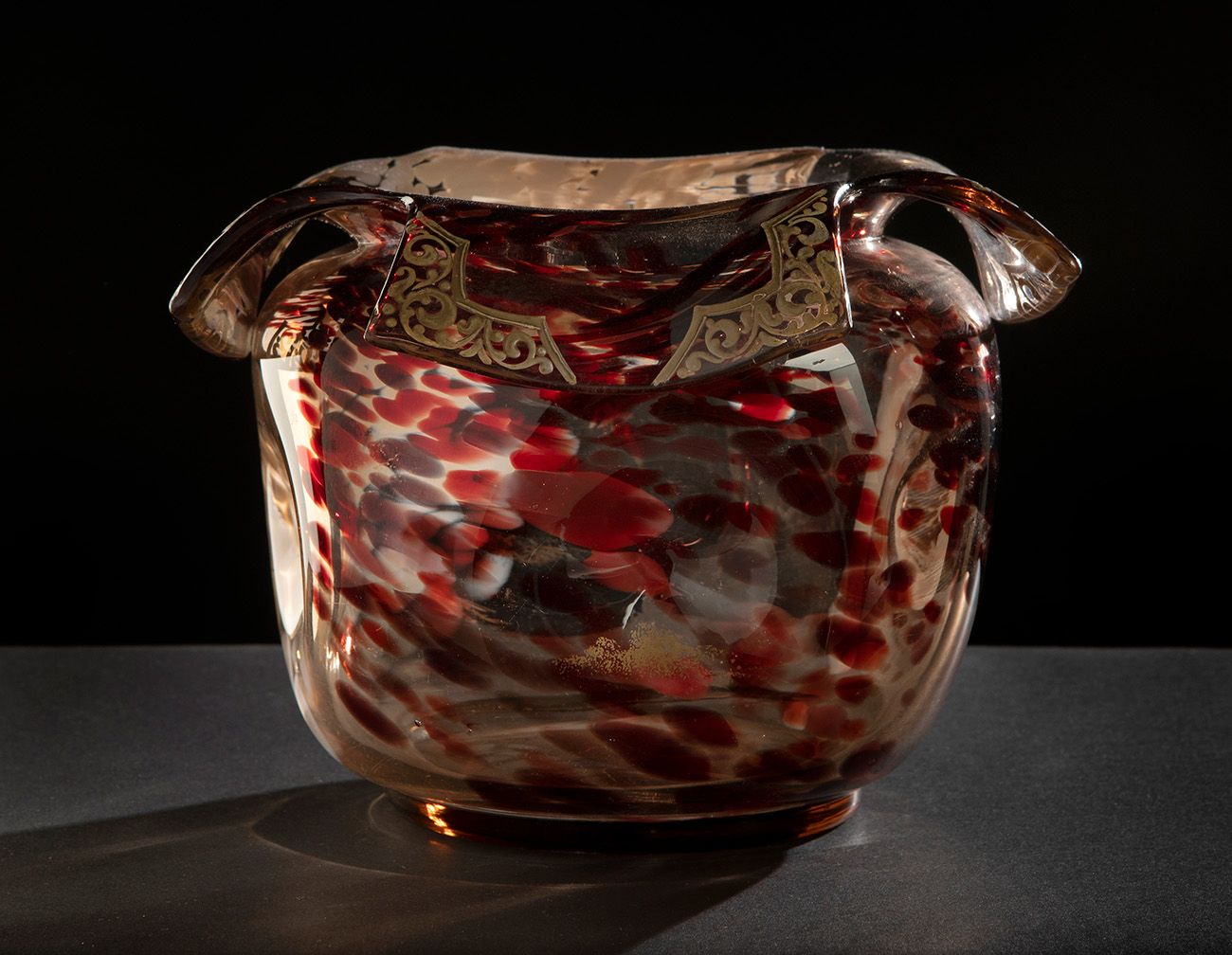Description
Possibly by WILHELM KRALIK & SOHNE, Bohemia, ca. 1910. Art Nouveau vase, ca.1910. Blown and bent glass, red and white two-tone, gilt borders. Procedure: Private Collection, Spain between 1970-1990. Measurements: 14,5 x 20 x 20 cm. Blown glass vase, with a flexible and fluid shape, typical of Art Nouveau. The way the mouth is bent to form attractive flaps, as well as the iridescent mottling in combination with gilded borders, are characteristic of the glass work of the Bohemian house of Wilhelm Kralik and Sohne. The firm Wilhelm Kralik & Sohne was founded in 1881, and focused on the production of iridescent art glass and applied wires, as well as a series of pieces inspired by those of Loetz. They also produced glass with an outer layer of silver. Kralik is especially known for its main productions: "Martelle", iridescent pieces combining white and pink glass and veins of other colours randomly distributed on the surface; and a set of pieces made in white and silver glass, with irregular textures. The factory closed during World War II.
79
Possibly by WILHELM KRALIK & SOHNE, Bohemia, ca. 1910. Art Nouveau vase, ca.1910. Blown and bent glass, red and white two-tone, gilt borders. Procedure: Private Collection, Spain between 1970-1990. Measurements: 14,5 x 20 x 20 cm. Blown glass vase, with a flexible and fluid shape, typical of Art Nouveau. The way the mouth is bent to form attractive flaps, as well as the iridescent mottling in combination with gilded borders, are characteristic of the glass work of the Bohemian house of Wilhelm Kralik and Sohne. The firm Wilhelm Kralik & Sohne was founded in 1881, and focused on the production of iridescent art glass and applied wires, as well as a series of pieces inspired by those of Loetz. They also produced glass with an outer layer of silver. Kralik is especially known for its main productions: "Martelle", iridescent pieces combining white and pink glass and veins of other colours randomly distributed on the surface; and a set of pieces made in white and silver glass, with irregular textures. The factory closed during World War II.
You may also like
